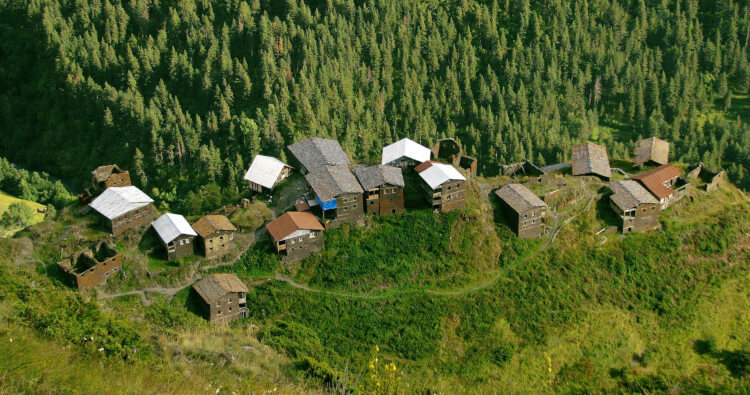Tusheti National Park in World Monuments Fund's endangered list

A view on the high-lying village of Dotchu in Tusheti National Park. Photo via Agency of Protected Areas of Georgia.
Georgia's picturesque Tusheti National Park, a protected area across hills of the southern slopes of the Caucasus mountain chain, has been designated among the World Monuments Fund's list of 25 at-risk heritage locations across the world.
The large and high-lying protected location, designated as a national park in 2003 and bringing together nearly a dozen tourist routes navigating natural and man-made sights in the remote province, is now part of the 2020 World Monuments Watch.
The list represents a selection of "cultural heritage sites that combine great historical significance with contemporary social impact" (WMF) but are facing dangers stemming from "encroaching urbanization, political turmoil, natural disaster, and violent conflicts".
The selection is drawn to highlight the risks facing the monuments as well as involve the team behind the World Monuments Watch together with local communities in search of solutions.
Listed alongside locations such as the Historic Water Systems of the Deccan Plateau in India, the Chojin Lama Temple in Mongolia and the Sacred Valley of the Incas in Peru, the national park in Georgia's north-east has been listed for a danger facing prospects of sustainable tourism in this largely untouched province.
While noting the Georgian government's push for restoration and rehabilitation of infrastructure in locations designated as tourist spots across the country, the WMF has noted a prospective risk to Tusheti brought by a construction project for a new road through its landscapes.
[W]hile improved and safe connectivity would bring many benefits to the population, it also risks jeopardizing investment in sustainable tourism in favor of mass tourism development" - WMF
The fund has said it will look to contribute to an effort at building sustainable tourism in Tusheti as well as "the revival of traditional skills, and to the long-term development of the area in the best interest of its inhabitants".
Throughout its operation the World Monuments Watch has served to conserve over 600 sites through awareness-raising, training of locals in sustainable management and allocation of about $300 million for efforts in conservation and safeguarding.
 Tweet
Tweet  Share
Share